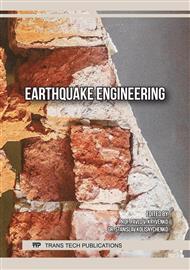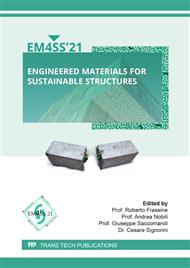p.15
p.21
p.28
p.35
p.49
p.55
p.65
p.72
p.80
Numerical Analysis to Evaluate the Structural Performance of NFRCM (Natural Fabric-Reinforced Cementitious) Strengthened Masonry
Abstract:
The innovative sustainable technology based on natural fabric-reinforced cementitious matrix (NFRCM) is analyzed for strengthening masonry. A new frontier for composite materials is proposed as an alternative to well-known traditional technologies used to improve the seismic behavior of buildings, such as the portuguese technique ‘gaiola pombalina’, the Italian ‘baraccata house’ and the turkish ‘himis house’. Preliminary sensitivity analysis is performed on NFRCM and ‘baraccata’ numerical models. Both technologies are numerically compared. From the experimental results of in-plane incremental load test carried out by CNR-Ivalsa a numerical model is calibrated by non-linear pushover analysis to evaluate the behavior of masonry wall strengthened with natural fibers. This paper demonstrates the effectiveness of NFRCM systems for strengthening masonry as: i) a non-invasive solution without significant thickness; ii) a sustainable technology; iii) an intervention involving the whole wall surface avoiding failure local mechanisms.
Info:
Periodical:
Pages:
49-54
Citation:
Online since:
May 2022
Keywords:
Price:
Сopyright:
© 2022 Trans Tech Publications Ltd. All Rights Reserved
Share:
Citation:



